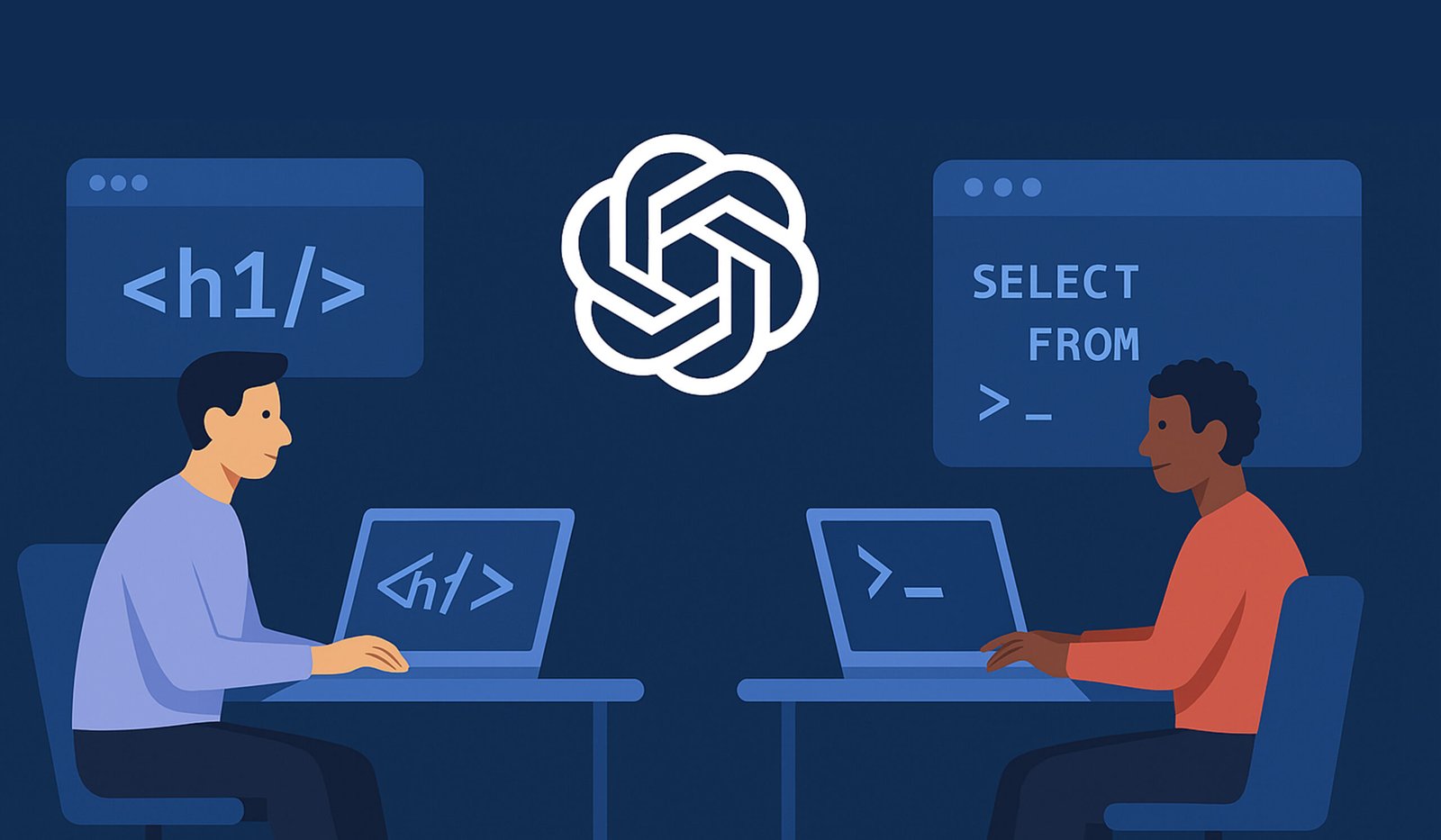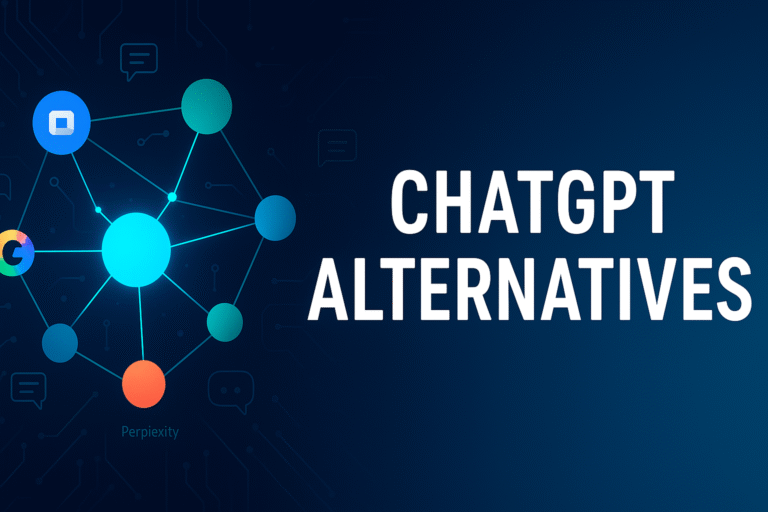Artificial intelligence is making its way into every field and debate. While AI’s role in content creation (visuals, text, videos, etc.) often takes center stage, it is gradually proving to be a highly valuable tool in web development—particularly in the case of ChatGPT. But what can it really offer Front-End and Back-End developers? And what are its limitations?
With its ability to “understand” and generate code, ChatGPT presents unique opportunities for developers.
Its main strength lies in its versatility. It can assist with a variety of tasks, from UI prototyping to back-end performance optimization. This potential opens up exciting possibilities… but also raises questions about AI’s place in web development.
ChatGPT in Front-End Development: A Tool for Speed and Creativity
Imagine you need to create a prototype quickly. Instead of starting from scratch, ChatGPT can generate a basic HTML/CSS structure based on your requirements. With just a few instructions, it provides a functional framework that can then be refined. Its ability to generate and optimize code makes it an interesting tool.
It can also assist with more advanced tasks, such as:
- Generating React or Vue.js components from functional descriptions.
- Optimizing CSS for better compatibility and accessibility.
- Suggesting animations and interactions based on current UX/UI trends.
Front-end performance optimization is equally crucial. ChatGPT can suggest ways to improve lazy loading, reduce loading times, and optimize API calls.
ChatGPT in Back-End Development: Automation and Advanced Assistance
Code Generation and Refactoring
On the back-end, ChatGPT can be a valuable ally for “code generation, database management, and server process automation,” as our author points out. AI capabilities continue to evolve, and ChatGPT is already helping with several development tasks, including:
- Writing complex SQL queries.
- Generating back-end scripts.
- Data migration.
- Bug detection.
However, as we often emphasize, ChatGPT should not be blindly trusted. Its code must always be reviewed and tested to ensure proper functionality.
AI does not replace the experience of a senior developer. It can suggest solutions, but their implementation requires a critical and experienced perspective.
The Limitations and Challenges of AI in Development
While ChatGPT’s capabilities are impressive, it is not infallible. Several limitations should be considered:
- Lack of context: It does not always understand the specific requirements of a project and may generate unsuitable code.
- Security concerns: Some solutions it suggests may contain vulnerabilities.
Conclusion: A Powerful Assistant, Not a Replacement
ChatGPT is a powerful tool for both Front-End and Back-End developers. It helps save time, experiment with new approaches, and boost productivity. However, it remains an assistant, not a substitute for human expertise.
So, how much trust should we place in it? What best practices should be followed to use it effectively?



